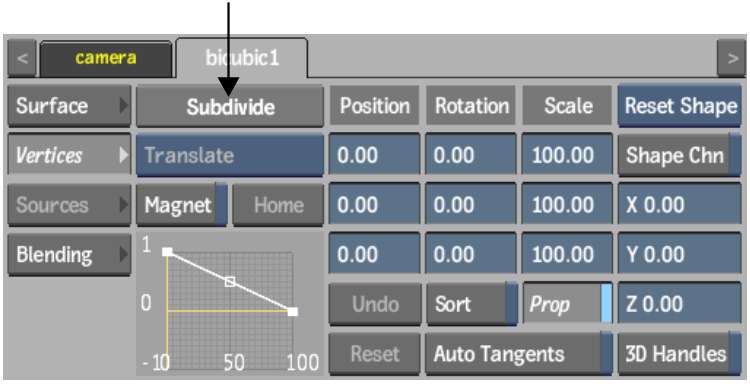Subdivide the bicubic
surface up to eight times to increase the number of vertices and
tangents. Then translate the vertices for a smaller region of the
image for more precision. You should warp the surface with a small
number of subdivisions to obtain the best results. After applying some
deformations to a large portion of the surface, subdivide the surface
further and perform deformations on a more localized region of the
surface.
To subdivide extended bicubics:
- From the Extended Bicubic Vertices menu,
click Subdivide.
You can click the subdivide
button up to eight times to further subdivide the surface.
- Transform the tangents to achieve the
effect you want.
To move the reference point:
- Select the reference point.
The reference point turns
red when selected.
- Drag the reference point to a new location,
or use the X, Y and Z fields to assign a new coordinate for the
reference point.
To rotate multiple surface points:
- Set the reference point values you want
to use as the axis of origin using the X, Y, Z Reference Point fields.
- Select multiple surface points by pressing Ctrl and dragging to select the
surface points.
- From the Edit Mode box, select Rotate.
A 3D trackball appears
on the reference point.
- Use the 3D trackball to rotate the reference
point and selected points.
All selected points rotate
around the reference point.
To scale multiple surface points:
- Set the reference point values you want
to use as the axis of origin using the X, Y, Z Reference Point fields.
- Select multiple surface points by pressing Ctrl and dragging to select the
surface points.
- From the Edit Mode box, select Scale.
- Drag in a direction in the image window
to scale accordingly.


